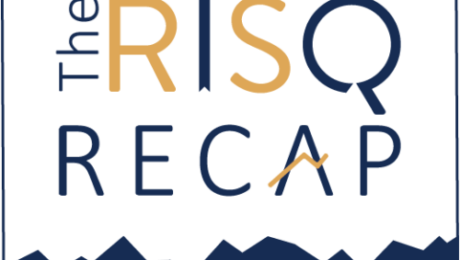More Drugs, Less Money
By Alison Nelson, Account Manager
You may know him from Shark Tank or as the owner of the Mavericks, but you may soon know Mark Cuban as the man disrupting the pharmaceutical industry. It was recently announced that, billionaire Mark Cuban, has launched an online pharmacy boasting significant savings when compared to some traditional pharmacies. What makes this online pharmacy, Cost Plus Drug Company, stand out is their commitment to pricing transparency.
Cost Plus Drug Company is basing their prices on a 15% markup from the manufacturer cost and a $3 labor charge. This results in candid transparency on how much prescriptions costs to make. One of the medications listed on their website, estimates a $6,112.28 savings. The pharmaceutical industry is often associated with price gouging, prompting anticipation to see how other pharmacies respond.
To read more about Cost Plus Drug Company, read this NPR article or visit their website here.
- Published in Blog
The RISQ RECAP – January 24th, 2022
January 24 – 28, 2022
Each week, you’ll find specially curated news articles to keep you up to date on the ever-evolving world of insurance and risk management. The articles are divided out between items relevant to Property & Casualty, Employee Benefits/Human Resources, and Compliance. We’ve included brief summaries of each item as well as a link to the original articles.

PROPERTY & CASUALTY
Extreme Weather in 2021 Brings Above-Average Claims to Global Insurers: Swiss Re
“Extreme weather events in 2021, including a deep winter freeze, floods, severe thunderstorms, heatwaves and a major hurricane, resulted in estimated annual insured losses from natural catastrophes of US$105 billion, the fourth highest since 1970, according to Swiss Re Institute’s preliminary sigma estimates.” Full Article
– Insurance Journal

EMPLOYEE BENEFITS, HUMAN RESOURCES, & COMPLIANCE
Supreme Court Lifts Stay on CMS Vaccine Mandate in 24 of the 25 States Where the Mandate Had Been Enjoined “In issuing an order on January 13, 2022, in two cases involving the Centers for Medicare and Medicaid Services (CMS) vaccine rule, Biden v. Missouri and Becerra v. Louisiana, the U.S. Supreme Court removed a temporary halt imposed by lower courts that affected health care facilities in 24 states, including Ohio, Indiana, and Kentucky.” Full Article – Taft
Big Money: OSHA and EPA Civil Penalties Increase for 2022 “We have blogged previously about the annual adjustments to the maximum civil penalty dollar amounts for OSHA and EPA violations. The agencies have now finalized the 2022 inflation adjustments, which increase the penalties yet again.” Full Article – Seyfarth Shaw
Labor Agencies Pursue Aggressive Agendas in 2022 “Executive Order 12866 requires federal agencies to publish an agenda of regulations they plan to propose, promulgate, or review in the coming one-year period. The Department of Labor’s regulatory agenda showed ambitious goals for its agencies in 2022, as does President Biden’s Build Back Better Framework. Employers should brace themselves for increased enforcement activity from agencies such as the Equal Employment Opportunity Commission (“EEOC”), the Occupational Safety and Health Administration (“OSHA”), and the Office of Federal Contract Compliance Programs (“OFCCP”).” Full Article – Hunton Andrews Kurth
Avoid Possible Tragedy in the Future by Preparing for Disasters and Emergencies Now “Employers have a duty to provide a safe workplace for employees, and that includes when there is a natural disaster or other emergency situation. According to the federal Occupational Safety and Health Administration (OSHA), a workplace emergency is a situation that threatens workers, customers, or the public; disrupts or shuts down operations; or causes physical or environmental damage.” Full Article – Akerman
NLRB and Department of Labor Join Forces: What Does This Mean for Employers? “Earlier this month, the U.S. Department of Labor’s Wage and Hour Division and the National Labor Relations Board announced a Memorandum of Understanding (MOU) described as “strengthening the agencies’ partnership and outlining procedures on information-sharing, joint investigations and enforcement activity, as well as training, education and community outreach.” Full Article – Barnes & Thornburg
Department of Labor Proposes New Formula For H-2A Guest Worker Wages “As December began, the U.S. Department of Labor (“DOL”) proposed a modified formula for calculating minimum wages for agricultural guest workers on H-2A visas. The proposal was necessitated by a federal judge in California striking down a prior proposal in December 2020 for the DOL failing to provide sufficient justification for two fundamental changes.” Full Article – Hall Benefits Law

STATE & INTERNATIONAL COMPLIANCE
In addition to the RISQ Review, RISQ Consulting also provides a resource that features changes and updates to State and International Compliance measures. We’ve included brief summaries of each item below, and also provided links to the original articles if you’d like to read further.
New York
Federal and New York City Workplace Vaccination and Testing Mandates: A Primer
“At President Biden’s urging, in late 2021, different arms of the federal government issued three high-visibility vaccine mandates to private employers, applying to federal contractors, many health care workers, and midsized and large employers. Those were followed by a sweeping order in New York City requiring businesses there to verify that their on- site employees have been vaccinated.” Full Article
– Skadden Arps
New Jersey
New Jersey Governor Signs Bill Expanding Parking Lot Liability for Employers
“On a cold January morning, New Jersey Gov. Phil Murphy trudged through the snow-covered statehouse parking lot and, with one swipe of pen, shifted the landscape for injuries that occur in employer parking lots. On January 10, 2022, Gov. Murphy signed S771 into law, expanding workers’ compensation liability in parking lots.” Full Article
– Goldberg Segalla
Illinois
Beware of the Illinois Employee who Insists on Independent Contractor Status
“Imagine that your company contracts with a salesperson, consultant, or other professional, who insists on an independent contractor arrangement. Your company accommodates by paying a daily rate for services, setting up a payment-upon-invoicing system, paying as a 1099 tractor, and signing a written contract stating your agreement that he is an independent contractor.” Full Article
– Krieg Devault
New Hampshire
Supreme Court of New Hampshire Weighs in On Reasonable Accommodations for Medical Marijuana Users
“The Supreme Court of New Hampshire reversed a trial court decision that dismissed a former employee’s complaint alleging his employer failed to consider whether it could reasonably accommodate his use of marijuana for medicinal purposes.” Full Article
– Seyfarth Shaw
Louisiana
Louisiana Supreme Court Upholds Private Employer Vaccine Mandate
“In Hayes v. University Health Shreveport, LLC, 2022 WL 71607 (La. Jan. 7, 2022), the Louisiana Supreme Court ruled that a hospital – or any other private employer – may impose an absolute vaccination requirement and fire any employee who fails to comply.” Full Article
– Reed Smith
- Published in Blog
Understand Your Rights Against Surprise Medical Bills
This article is from RISQ Consulting’s Zywave client portal, a resource available to all RISQ Consulting clients. Please contact your Benefits Consultant or Account Executive for more information or for help setting up your own login.
The No Surprises Act protects people covered under group and individual health plans from receiving surprise medical bills when they receive most emergency services, non-emergency services from out-of-network providers at in-network facilities and services from out-of-network air ambulance service providers. It also establishes an independent dispute resolution process for payment disputes between plans and providers, and provides new dispute resolution opportunities for uninsured and self-pay individuals when they receive a medical bill that is substantially greater than the good faith estimate they get from the provider.
Starting in 2022, there are new protections that prevent surprise medical bills. If you have private health insurance, these new protections ban the most common types of surprise bills. If you’re uninsured or you decide not to use your health insurance for a service, under these protections, you can often get a good faith estimate of the cost of your care up front before your visit. If you disagree with your bill, you may be able to dispute the charges. Here’s what you need to know about your new rights.
What Are Surprise Medical Bills?
Before the No Surprises Act, if you had health insurance and received care from an out-of-network provider or an out-of-network facility, even unknowingly, your health plan may not have covered the entire out-of-network cost. This could have left you with higher costs than if you got care from an in-network provider or facility. In addition to any out-of-network cost-sharing you might have owed, the out-of-network provider or facility could bill you for the difference between the billed charge and the amount your health plan paid, unless banned by state law. This is called “balance billing.” An unexpected balance bill from an out-of-network provider is also called a surprise medical bill.
People with Medicare and Medicaid already enjoy these protections and are not at risk for surprise billing.
What Are the New Protections if I Have Health Insurance?
If you get health coverage through your employer, a Health Insurance Marketplace or an individual health insurance plan you purchase directly from an insurance company, these new rules will:
- Ban surprise bills for most emergency services, even if you get them out-of-network and without approval beforehand (prior authorization).
- Ban out-of-network cost-sharing (such as out-of-network coinsurance or copayments) for most emergency and some non-emergency services. You can’t be charged more than in-network cost-sharing for these services.
- Ban out-of-network charges and balance bills for certain additional services (such as anesthesiology or radiology) furnished by out-of-network providers as part of a patient’s visit to an in-network facility.
- Require that health care providers and facilities give you an easy-to-understand notice explaining the applicable billing protections, who to contact if you have concerns that a provider or facility has violated the protections and that patient consent is required to waive billing protections (i.e., you must receive notice of and consent to being balance billed by an out-of-network provider).
What if I Don’t Have Health Insurance or Choose to Pay for Care on My Own Without Using My Health Insurance (Also Known as “Self-Paying”)?
If you don’t have insurance or you self-pay for care, in most cases, these new rules make sure you can get a good faith estimate of how much your care will cost before you receive it.
What if I’m Charged More Than My Good Faith Estimate?
For services provided in 2022, you can dispute a medical bill if your final charges are at least $400 higher than your good faith estimate and you file your dispute claim within 120 days of the date on your bill.
What if I Don’t Have Insurance From an Employer, a Marketplace or an Individual Plan? Do These New Protections Apply to Me?
Some health insurance coverage programs already have protections against surprise medical bills. If you have coverage through Medicare, Medicaid or TRICARE, or receive care through the Indian Health Services or Veterans Health Administration, you don’t need to worry because you’re already protected against surprise medical bills from providers and facilities that participate in these programs.
What if My State Has a Surprise Billing Law?
The No Surprises Act supplements state surprise billing laws; it does not supplant them. The No Surprises Act instead creates a “floor” for consumer protections against surprise bills from out-of-network providers and related higher cost-sharing responsibility for patients. So as a general matter, as long as a state’s surprise billing law provides at least the same level of consumer protections against surprise bills and higher cost-sharing as does the No Surprises Act and its implementing regulations, the state law generally will apply.
For example, if your state operates its own patient-provider dispute resolution process that determines appropriate payment rates for self-pay consumers, and Health and Human Services (HHS) has determined that the state’s process meets or exceeds the minimum requirements under the federal patient-provider dispute resolution process, then HHS will defer to the state process and would not accept such disputes into the federal process.
As another example, if your state has an All-Payer Model Agreement or another state law that determines payment amounts to out-of-network providers and facilities for a service, the All-Payer Model Agreement or other state law will generally determine your cost-sharing amount and the out-of-network payment rate.
Where Can I Learn More?
Still have questions? Visit CMS.gov/nosurprises or reach out to human resources.
- Published in Blog
How to Get Your Free At-home COVID-19 Test
This article is from RISQ Consulting’s Zywave client portal, a resource available to all RISQ Consulting clients. Please contact your Benefits Consultant or Account Executive for more information or for help setting up your own login.
If you participate in a health plan—through your employer or otherwise—you are likely eligible for free, over-the-counter COVID-19 tests for home use. Depending on your plan, your COVID-19 tests will be paid for directly by insurance, or you will be reimbursed later for the cost. The human resources (HR) department will be able to tell you which applies to you. Keep reading to learn more about this cost-saving opportunity.
Up to what price is covered?
In many instances, insurance companies are only required to reimburse you at a rate of up to $12 per individual test (or the cost of the test if it’s less than $12). This is typically the case when your insurance company has specific locations they want you to get your test from. However, if your insurance company doesn’t specify where you may get a COVID-19 test, you may be able to be reimbursed for your full test cost, even if it exceeds $12. In all cases, keep your receipts! Speak with your HR department to learn more about your plan’s cost limits and preferred purchasing locations.
Do I need to purchase the test at a certain location for it to be free?
Your employer may have specific locations (e.g., pharmacies) where you can pick up a free test that is paid for directly by your insurance. Your HR department will be able to tell you. However, you can also purchase a COVID-19 test from anywhere you like (i.e., online or in-person at a store) and still be reimbursed up to $12 for the test (or more, depending on your plan). Be sure to keep your receipts in order to be reimbursed.
How will I be reimbursed for my test?
If you need to be reimbursed for a COVID-19 test (i.e., it was not free at the point of sale), keep your receipts. Then, reach out to your HR department —they will be able to tell you how to submit the receipt for reimbursement from your insurance company.
How long will reimbursement take?
Reimbursement is typically prompt, but it may vary. Your HR department will be able to provide a more accurate time estimate.
What if I cannot afford to pay for a test upfront and wait for reimbursement?
There are a number of low- or no-cost COVID-19 testing options. You can find community-based testing sites here. Alternatively, COVID-19 tests are also available without cost sharing or limitations to covered individuals when administered by a health care provider (e.g., a nurse, doctor or pharmacist).
Can I be reimbursed for past COVID-19 tests I purchased?
Insurance companies are only obligated to reimburse you for COVID-19 tests purchased on or after Jan. 15, 2022. Any tests bought before then are not covered. However, while the answer will generally be no, you still can speak with your plan sponsor about potential reimbursement for COVID-19 tests you bought previously.
Is there a limit on the number of tests I can be reimbursed for?
Your plan is required to provide reimbursement for eight tests per month, regardless of whether the tests are bought all at once or at separate times throughout the month.
My workplace requires weekly COVID-19 testing. Can I be reimbursed for these tests?
Plans are not required to provide coverage for testing (including at-home COVID-19 tests) that is for employment purposes. Speak with your HR department to learn more about ’s testing requirements and your potential related costs.
Where can I learn more?
If you have any questions about the information in this article, reach out to your HR department.
- Published in Blog
Concussions & How to Repair Your Gray Noodle
By Jennifer Outcelt, Creative Content Architect
Here I am again, sharing a head banging episode of my favorite podcast, Ologies! Why do I keep pushing these on you? Well, it’s simple; Ologies is amazing, and I want only amazing things for you.
Speaking of amazing things, your brain is by far the most complicated, resilient, and beautiful organ in your body. It is also the most meta organ out there. It literally uses itself to learn more about itself. So hipster, am I right? Anyhoo.
Sometimes these crazy cool brains get conked and can cause concussions, creating confusion and discomfort (and possibly excessive use of alteration). This episode is ALL about concussions and the whats, whys, and hows of everything in between injury and full recovery. The main take away; take care of that noggin! Also, go to the doctor for head trauma! Learn more about this common injury and how to repair that beautiful gray noodle by listening to the Neuropathology episode on the Ologies podcast at the link below.
- Published in Blog
The RISQ RECAP – January 17th, 2022
January 17 – 21, 2022
Each week, you’ll find specially curated news articles to keep you up to date on the ever-evolving world of insurance and risk management. The articles are divided out between items relevant to Property & Casualty, Employee Benefits/Human Resources, and Compliance. We’ve included brief summaries of each item as well as a link to the original articles.

PROPERTY & CASUALTY
3 Emerging and Future Trends in Workers’ Compensation
“Executives from Enlyte provided their perspective on the impact of pharmacy (including medical marijuana), return to work, and mental health treatment trends in the field of workers’ compensation. Enlyte experts from disparate disciplines reflected recently on three emerging and future trends in workers’ compensation. Enlyte is the parent company of Mitchell, Genex and Coventry, which provides technology, clinical services and network solutions for the property and casualty insurance industry.” Full Article
– Risk & Insurance

EMPLOYEE BENEFITS, HUMAN RESOURCES, & COMPLIANCE
Eighth Circuit Concludes That ERISA Does Not Preempt State Law Regulating PBMs “This was a fairly straightforward application of the Supreme Court’s Rutledge ruling, which held that ERISA does not preempt state laws that merely increase costs or alter incentives for ERISA plans. While these cases involved PBM laws, this line of reasoning could apply to other state laws governing entities or processes that have some relationship to ERISA plans, such as laws regulating TPAs and other service providers.” Full Article – Thomson Reuters / EBIA
Eleventh Circuit Highlights Importance of Unambiguous Disclaimers in SPDs “At times, Allstate made representations to employees, both orally and in writing, that their retirement life insurance benefits were ‘paid up’ or ‘for life.’ Because the SPDs unambiguously gave Allstate the right to change, amend, or terminate the plan at any time, and expressly clarified that employees had no vested rights under the plan, the appellate court agreed with the district court that plaintiffs failed to establish that benefits were actually ‘due’ under ‘the terms of the plan’ for purposes of ERISA Section 502(a) (1)(B).” Full Article – Jackson Lewis P.C.
Understanding the ‘No Surprises’ Rules “The ‘No Surprises’ Rules also introduce a negotiation and dispute resolution process for situations where the health plan and provider do not agree that the plan’s ordinary payment is appropriate. The rules set a strong presumption as to the amount. The rules include information that plans will need to provide to participants about the expected costs and benefits for a service subject to the rules. This requirement is delayed, pending further guidance.” Full Article – Ballard Spahr LLP
You Can Go Home Again: Agencies Release New Group Health Plan “Plan sponsors will want to contact their pharmacy benefit managers or other networks in short order to determine whether they have a direct coverage solution that will satisfy the safe harbor requirements and allow the plan to impose a dollar limitation on out-of-network costs.” Full Article – Proskauer
Coverage Requirements for COVID-19 Tests
Supreme Court Characterizes ETS as Public Health Measure Outside of OSHA’s Jurisdiction “The Court asserted that OSHA has failed to show evidence of ‘grave danger’ in many industries, and absolves employers of the requirement to ensure that unvaccinated employees engage in weekly testing. With the ETS set to expire in May, it is unclear whether it will ever become law and again be enforced. The government will need to determine whether to continue to press its merits case at the Sixth Circuit before a possible return engagement with the Supreme Court.” Full Article – Seyfarth Shaw LLP
DOL Increases Civil Money Penalties for 2022 “A table reflects the DOL’s 2022 annual inflation adjustments to the civil money penalties for violations of certain requirements under ERISA, effective January 15, 2022.” Full Article – Thomson Reuters Practical Law

STATE & INTERNATIONAL COMPLIANCE
In addition to the RISQ Review, RISQ Consulting also provides a resource that features changes and updates to State and International Compliance measures. We’ve included brief summaries of each item below, and also provided links to the original articles if you’d like to read further.
New York
New York Department of Labor Releases Final Regulations for State Sick Leave Law
“The New York Department of Labor issued final regulations regarding the New York State Sick Leave Law (NYSSLL), which has been in effect since September 30, 2020. The final regulations do not contain any changes to the rules initially proposed on December 9, 2020.” Full Article
– Littler Mendelson
Connecticut
Connecticut Paid Leave Payments and Connecticut FMLA Changes Coming January 1: What You Need to Know
“As we speed closer to January 1, the date when payments will begin der Connecticut’s Paid Family and Medical Leave Act and the effective date of changes to Connecticut’s Family and Medical Leave Act (CT FMLA), below are some updates and considerations for employers.” Full Article
– Jackson Lewis
Minnesota
A Blizzard of Activity from Minnesota OSHA in the New Year
“On January 3, 2022, Minnesota OSHA adopted the ETS by reference in the State Register. For Minnesota employers with 100 or more employees this means they must develop and implement a COVID-19 vaccination and testing policy by January 10, 2022. (MNOSHA indicated it will not issue citations for noncompliance with any requirements of the ETS before Jan. 10.) Further, employers must make the testing requirements of their policies operational by February 9, 2022.” Full Article
– Littler Mendelson
Washington
Washington Long-Term Cares Fund Update: Employers Advised to Withhold Premiums Starting January 1
“Governor Jay Inslee has clarified that, starting January 1, “employers will still be legally obligated to pay the full amount owed to state ESD Employment Security Department] to begin the long-term care program” under the Washington Long-Term Services and Supports Act, until the legislature changes the law.” Full Article
– Jackson Lewis
California
California Adopts New CDC Guidance Regarding Quarantine and Isolation Periods With Its Own Twists
“The California Department of Public Health (CDPH) released updated guidance to conform to the new CDC guidelines but added additional requirements, including testing to exit isolation or quarantine after the fifth day. Notably, the new guidance also introduces a distinction between boosted and non-boosted individuals for the first time.” Full Article
– Hunton Andrews Kurth
- Published in Blog
And Now For Something Completely Compliant! – Upcoming ACA Reporting Deadlines
This article is from RISQ Consulting’s Zywave client portal, a resource available to all RISQ Consulting clients. Please contact your Benefits Consultant or Account Executive for more information or for help setting up your own login.
RISQ Consulting is pleased to remind you of the upcoming ACA reporting deadlines. Please take note of the dates and requirements to ensure your company is keeping all your ducks in a perfect row. And now for something completely compliant!
Affordable Care Act (ACA) reporting under Section 6055 and Section 6056 for the 2021 calendar year is due in early 2022. Specifically, reporting entities must:
- Furnish statements to individuals by March 2, 2022; and
- File returns with the IRS by 28, 2022 (or March 31, 2022, if filing electronically).
Penalties may apply for reporting entities that fail to file and furnish required returns and statements by the deadline.
A proposed rule issued on Nov. 22, 2021, extended the annual furnishing deadlines under both Sections 6055 and 6056 for an additional 30 days. This rule is in proposed form and has not been finalized. However, reporting entities may rely on the proposed rule for 2021 reporting, even before it is finalized. Reporting entities are generally encouraged to furnish statements to individuals as soon as they are able.
Important Dates
- February 28, 2022 – Deadline for 2021 filing with the IRS in paper form
- March 2, 2022 – Deadline for furnishing 2021 Forms 1095-B and 1095-C to individuals
- March 31, 2022 – Deadline for 2021 filing with the IRS electronically
Action Steps
The IRS generally encourages reporting entities to furnish statements as soon as they are able.
Although penalty relief has been provided in prior years for reporting entities that make good faith efforts to comply with the reporting requirements, this penalty relief is not available for reporting for tax year 2021 and subsequent years. This good faith relief was intended to be transitional to accommodate public concerns with implementing new reporting requirements under the ACA. These reporting requirements have now been in place for six years, and the IRS has determined that transitional relief is no longer appropriate. Therefore, the IRS has discontinued the transitional good faith relief after tax year 2020.
Section 6055 and 6056 Reporting
- Section 6055 applies to providers of minimum essential coverage (MEC), such as health insurance issuers and employers with self-insured health plans. These entities generally use Forms 1094-B and 1095-B to report information about the coverage they provided during the previous year.
- Section 6056 applies to applicable large employers (ALEs)—generally, those employers with 50 or more full-time employees, including full-time equivalents, in the previous year. ALEs use Forms 1094-C and 1095-C to report information relating to the health coverage that they offer (or do not offer) to their full-time employees.
The ACA’s individual mandate penalty was reduced to zero beginning in 2019. As a result, the IRS has been studying whether and how the Section 6055 reporting requirements should change, if at all, for future years. Despite the elimination of the individual mandate penalty, Section 6055 reporting continues to be required. A proposed rule described below would provide that individual statements do not have to be furnished if certain requirements are met. However, this proposed rule has not been finalized.
Annual Deadlines
Generally, forms must be filed with the IRS annually, no later than Feb. 28 (March 31, if filed electronically) of the year following the calendar year to which the return relates. In addition, reporting entities must also furnish statements annually to each individual who is provided MEC (under Section 6055) and each of the ALE’s full-time employees (under Section 6056). Individual statements are generally due on or before Jan. 31 of the year immediately following the calendar year to which the statements relate.
Extended Furnishing Deadlines
The proposed rule provides an automatic extension of 30 days to furnish statements (Forms 1095-B and 1095-C) to individuals under Sections 6055 and 6056. Because the extension is automatic, reporting entities do not need to formally request an extension from the IRS.
Under the proposed rule, statements furnished to individuals will be timely if furnished no later than 30 days after Jan. 31 of the calendar year following the calendar year to which the statement relates. If the extended furnishing date falls on a weekend day or legal holiday, statements will be timely if furnished on the next business day.
This rule is in proposed form and has not been finalized. However, reporting entities may rely on the proposed rule for 2021 reporting, even before it is finalized.
Impact on Filing Deadline
The proposed rule does not extend the due date for filing Forms 1094-B, 1095-B, 1094-C or 1095-C with the IRS. This due date remains Feb. 28, if filing on paper, or March 31, if filing electronically. Because the due dates are unchanged, potential automatic extensions of time for filing information returns are still available under the normal rules by submitting Form 8809. Additional extensions of time to file may also be available under certain hardship conditions.
Alternative Method of Furnishing Under Section 6055
The individual mandate penalty has been reduced to zero, beginning in 2019. As a result, an individual does not need the information on Form 1095-B in order to calculate his or her federal tax liability or file a federal income tax return. However, reporting entities required to furnish Form 1095-B to individuals must continue to expend resources to do so.
For all years that the individual mandate penalty is zero, the proposed rule provides an alternative manner for a reporting entity to furnish statements to individuals under Section 6055. Under this alternative manner of furnishing, the reporting entity must post a clear and conspicuous notice on its website stating that responsible individuals may receive a copy of their statement upon request. The notice must include an email address, a physical address to which a request may be sent and a telephone number to contact the reporting entity with any questions. Reporting entities must generally retain the website notice until Oct. 15 of the year following the calendar year to which the statement relates.
ALEs that offer self-insured health plans are generally required to use Form 1095-C, Part III, to meet the Section 6055 reporting requirements, instead of Form 1095-B. Self-insured ALEs may use this relief for employees who are enrolled in the ALE’s self-insured plan and who are not full-time employees of the ALE, as well as for nonemployees (such as former employees) who are enrolled in the self-insured plan. However, ALEs may not use the alternative method of furnishing for full-time employees who are enrolled in the self-insured plan.
If, in the future, the individual mandate penalty is not zero, the IRS anticipates that reporting entities will need adequate time to develop or restart processes for preparing and mailing paper statements to responsible individuals. If the individual mandate penalty is modified in the future, the IRS anticipates providing guidance, if necessary, to allow sufficient time for reporting entities to restart the reporting process.
Elimination of Good Faith Transition Relief from Penalties
For each prior year of reporting, the IRS has provided transitional good faith penalty relief for reporting entities that could show that they made good faith efforts to comply with the information reporting requirements. However, the transitional good faith relief from penalties for reporting incorrect or incomplete information on information returns or statements is not available for reporting for tax year 2021 and subsequent years.
This good faith relief was intended to be transitional to accommodate public concerns with implementing new reporting requirements under the ACA. These reporting requirements have now been in place for six years, and the IRS has determined that transitional relief is no longer appropriate. Therefore, the IRS has discontinued the transitional good faith relief after tax year 2020.
- Published in Blog
Employee Wellness Trends to Watch in 2022
This article is from RISQ Consulting’s Zywave client portal, a resource available to all RISQ Consulting clients. Please contact your Benefits Consultant or Account Executive for more information or for help setting up your own login.
The workplace continues to change as the two-year mark of the COVID-19 pandemic approaches—and employer-sponsored wellness programs are no different. The pandemic has put employee health and wellness in the spotlight, and employers’ wellness initiatives will continue to grow in 2022. According to the Business Group on Health’s 2022 Large Employers’ Health Care Strategy and Plan Design Survey, employers recognize that COVID-19 may have long-term impacts on employees. Notably, many employers anticipate increasing medical services due to delayed care (94%) and are concerned about long-term mental health issues (91%).
Given the pandemic’s immediate and lasting impacts on employee health, it’s no surprise that employers are expected to expand their wellness offerings in 2022. Here are four popular employee wellness trends to look out for in 2022.
1. Expanded Mental Health Resources
Many organizations have prioritized mental health during the pandemic. Many workers continue to battle stress and anxiety in both their personal and work lives. Not only are employees faced with changing workplace policies and responsibilities, but they are also navigating how to reconnect with friends and family. Fortunately, the mental burden of the COVID-19 pandemic has enabled more transparency and empathy around the topic, especially in the workplace.
Many employers will continue to work on ways to address employees’ short- and long-term mental health issues, as there’s a significant need and desire for mental health support in the workplace. According to a 2021 Calm for Business workplace mental health survey, 97% of employees said that employers should be trying to improve employee mental health. Consider the additional survey findings:
- 76% of employees find mental health benefits critical when evaluating a new job.
- 87% of employees feel nervous, anxious or stressed working through a pandemic.
- 80% of employees are having difficulty falling and staying asleep during the pandemic.
- 43% of employees attribute poor mental health to their job based on a lack of recognition and belonging.
Employers who are invested in their employees’ mental health often yield healthy employees who take fewer days off, contribute to positive workplace culture and are more productive. One way to address employee mental health is by ensuring mental health is an essential part of overall health care offerings. Additionally, employers may expand telebehavioral health and employee assistance program (EAPs), as well as increase the use of mental health apps. Employers who provide diverse health care resources that deliver behavioral, emotional and social services are in a great position to improve their workforce’s overall well-being.
2. Advancement of Health Equity
The pandemic has undoubtedly shed light on health disparities. Several underlying social and economic challenges (e.g., health care, income and childcare) can influence overall well-being. To tackle health inequalities, some employers are making employee benefits and wellness programs more affordable and inclusive. The goal is to ensure all employees have access to the health care they need. That can look different for every employee, so employers may start with focusing on general goals to help employees manage any chronic conditions or severe acute needs, such as cancer, or receive recommended prenatal care.
Furthermore, some health insurance providers are working with local, state and federal governments to improve health equity to ensure Americans have an equal opportunity to thrive and achieve their best health. Employers can select providers striving to make health care more affordable and accessible to all employees. Employers have a great chance to help employees maximize their full health potential by supporting efforts that advance health equity in the communities where employees live and work.
3. Increased Focus on Hybrid Work-life Balance
Employee wellness programs must continue to evolve to meet the demands of the current workforce. At this point in the pandemic, it appears the hybrid workplace is here to stay. As such, many employers are shifting their perspective of hybrid work from a novelty to the new standard in 2022; but with that shift, employers must recognize the unique challenges employees face as hybrid workers. As the boundaries between work and home are blurred, employees may experience burnout or undergo a decrease in their physical or mental health.
A healthy work-life balance seems like an unattainable goal for many Americans. Still, employers can do their best to help and offer robust resources and support, especially for hybrid or remote employees. A holistic approach helps address all aspects of the body and mind. Health plans may include access to mental health professionals and assistance dealing with stress and depression. To support varying personal responsibilities, organizations may also consider how to increase schedule flexibility or time off for mental health or recharging. Such companies may also be focusing on key performance indicators like employee satisfaction and retention. As more organizations operate in hybrid or remote settings, employees are more likely to expect such comprehensive wellness offerings from their employers.
4. Expanded Financial Wellness Resources
Money is a top stressor for employees, and the pandemic has reinforced that fact. Seventy-three percent of Americans rank their finances as their number one source of stress, according to a 2021 CreditWise survey. As the pandemic evolves, employers are uniquely positioned to support employees with much-desired financial guidance and educational resources.
First, employers should be aware of the most common financial goals of employees:
- Building an emergency savings
- Navigating cashflow changes
- Choosing the proper health insurance and benefits
- Preparing for significant life events
- Saving for retirement
Many organizations employ a multigenerational workforce, which means employees often face unique financial stressors. To provide relief, some employers offer financial wellness programs that vary in complexity but can include virtual personal financial planning meetings, tuition reimbursement and seminars. The idea is to provide a wide variety of services for the workforce. Employers can help reduce employee financial stress by exploring financial wellness resources and support options and offering attractive programs for current and prospective employees. Financial wellness is a critical component of well-being and can be a competitive offering in today’s labor market.
Conclusion
All signs indicate that mental and financial wellness will become significant pain points in 2022. The pandemic also continues to expose health inequalities and an unattainable work-life balance for many American workers. The most robust 2022 employee wellness offerings and programs will likely be employee-centered, focusing on how to provide the most comprehensive, attainable and affordable benefits. Many employees will not only need resources for handling new pandemic-related mental and financial challenges but also support for working in a remote or hybrid setting as the lines blur between their home and work lives. This year, employers are expected to explore programs and initiatives that ensure all employees have access to the physical, mental and financial benefits they need to address the pandemic’s short- and long-term impacts.
Organizations can start with evaluating current wellness initiatives and thinking about ways to improve them. To ensure offerings and investments will resonate with the workforce, it can be helpful to survey employees first and see what they find most valuable and necessary for their overall well-being after two years of living through a pandemic.
Contact RISQ Consulting today for more wellness program ideas or ways to get started.
- Published in Blog
The RISQ RECAP – January 10th, 2022
January 10 – 14, 2022
Each week, you’ll find specially curated news articles to keep you up to date on the ever-evolving world of insurance and risk management. The articles are divided out between items relevant to Property & Casualty, Employee Benefits/Human Resources, and Compliance. We’ve included brief summaries of each item as well as a link to the original articles.

PROPERTY & CASUALTY
2022 Set to be “Hangover” Year From 2021’s Cyber Epidemic
“Much of the cyber turmoil that plagued the world in 2021 will continue into 2022, with individuals remaining the top source of risk in an irrevocably online society, according to Experian’s annual Data Breach Industry Forecast for 2022. ‘In a sense, 2022 will be a sort of hangover from 2021’s cyberdemic,’ commented breach resolution firm in its report. ‘Since so much of our lives now take place online, the digitization of society means that our infrastructure, institutions and personal lives are more exposed than ever to malicious actors. Big institutions remain vulnerable, despite spending millions on security, and cybercriminals have plenty of opportunities to exploit weak technologies.’ ” Full Article
– Zywave

EMPLOYEE BENEFITS, HUMAN RESOURCES, & COMPLIANCE
Effectively Implementing Social Media Policies in the Workplace “The stated goal of the National Labor Relations Board (“NLRB”) is to ensure that employers are not violating Section 8(a)(1) of the National Labor Relations Act (the “Act”) by implementing a work rule that would “reasonably tend to chill employees in the exercise of their Section 7 rights.” In particular, the NLRB has focused on the precise wording and language used in employment handbooks. Although the NLRB’s yardstick in this area is apparently flexible rather than rigid, a careful understanding of applicable NLRB opinions can help employers regulate social media usage more effectively.” Full Article – Klein, Moynihan, Turco
Federal Contractors Must Ban the Box “The Fair Chance to Compete for Jobs Act of 2019 took effect on December 20, 2021 and requires agencies to include a clause in federal contracts that prohibits contractors from requesting, either verbally or in writing, the criminal history of an applicant for work under a federal contract until after a conditional offer of employment has been made. (The “box” refers to the box on many employment applications, which must be checked if the applicant has a criminal record). There are exceptions where a criminal background check prior to the offer is required by law, the position is related to law enforcement or national security duties, or the position has access to classified information.” Full Article – Shawe Rosenthal
Immigration Updates in COVID-19 Times “International borders have been closed for 18 months, U.S. embassies abroad have been operating at a limited capacity, and yet employers struggle to find and retain talent. Corporate immigration, including H-1Bs and other visas, continues to provide a solution for savvy employers. Here are the most important immigration changes within the last year.” Full Article – Holland & Hart
Coworking Spaces: COVID-19 Considerations “As workplaces are reimagined, employers and operators of coworking spaces need to consider how to operate safely in the age of the COVID-19 pandemic. – Jackson Lewis
Coworking spaces have become an intriguing work alternative for remote employees, hybrid workers, self-employed individuals, independent contractors, and others. Employers and operators of coworking spaces should consider such issues as the security of sensitive company or employee information and compliance with COVID-19 health and safety rules, among others.
” Full Article

STATE & INTERNATIONAL COMPLIANCE
In addition to the RISQ Review, RISQ Consulting also provides a resource that features changes and updates to State and International Compliance measures. We’ve included brief summaries of each item below, and also provided links to the original articles if you’d like to read further.
New York
New York Department of Labor Releases Final Regulations for State Sick Leave Law
“The New York Department of Labor issued final regulations regarding the New York State Sick Leave Law (NYSSLL), which has been in effect since September 30, 2020. The final regulations do not contain any changes to the rules initially proposed on December 9, 2020.” Full Article
– Littler Mendelson
Connecticut
Connecticut Paid Leave Payments and Connecticut FMLA Changes Coming January 1: What You Need to Know
“As we speed closer to January 1, the date when payments will begin der Connecticut’s Paid Family and Medical Leave Act and the effective date of changes to Connecticut’s Family and Medical Leave Act (CT FMLA), below are some updates and considerations for employers.” Full Article
– Jackson Lewis
Minnesota
A Blizzard of Activity from Minnesota OSHA in the New Year
“On January 3, 2022, Minnesota OSHA adopted the ETS by reference in the State Register. For Minnesota employers with 100 or more employees this means they must develop and implement a COVID-19 vaccination and testing policy by January 10, 2022. (MNOSHA indicated it will not issue citations for noncompliance with any requirements of the ETS before Jan. 10.) Further, employers must make the testing requirements of their policies operational by February 9, 2022.” Full Article
– Littler Mendelson
Washington
Washington Long-Term Cares Fund Update: Employers Advised to Withhold Premiums Starting January 1
“Governor Jay Inslee has clarified that, starting January 1, “employers will still be legally obligated to pay the full amount owed to state ESD Employment Security Department] to begin the long-term care program” under the Washington Long-Term Services and Supports Act, until the legislature changes the law.” Full Article
– Jackson Lewis
California
California Adopts New CDC Guidance Regarding Quarantine and Isolation Periods With Its Own Twists
“The California Department of Public Health (CDPH) released updated guidance to conform to the new CDC guidelines but added additional requirements, including testing to exit isolation or quarantine after the fifth day. Notably, the new guidance also introduces a distinction between boosted and non-boosted individuals for the first time.” Full Article
– Hunton Andrews Kurth
- Published in Blog
- 1
- 2








